Relieve Nasal Congestion with this DIY Inhaler
Relieve nasal congestion fast with this easy-to-make DIY nasal inhaler that uses therapeutic Dead Sea salts.
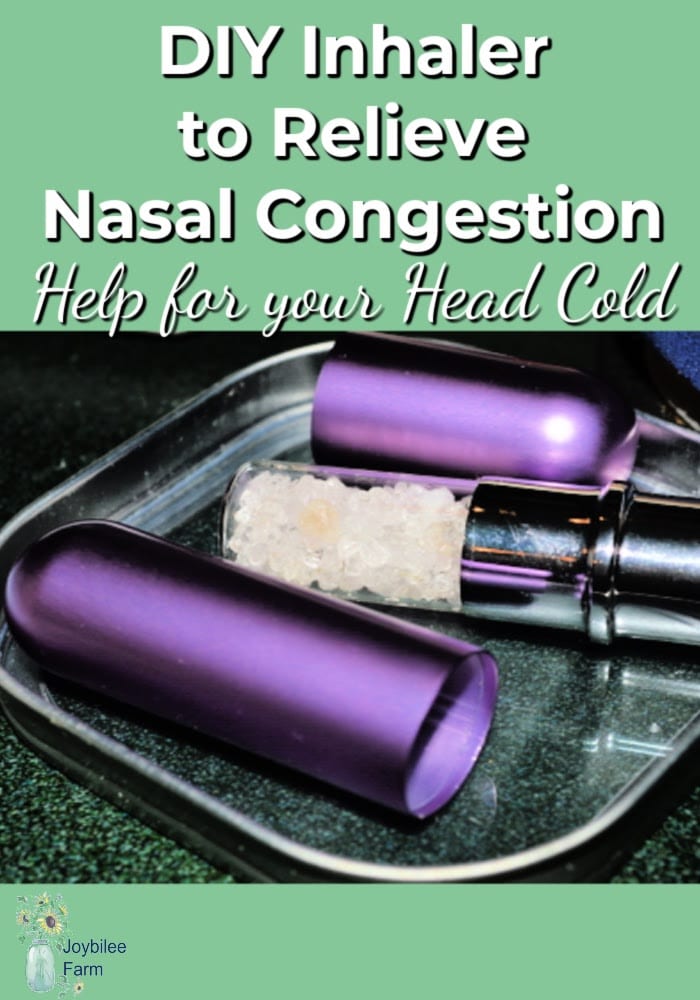
Help for your head cold
I always seem to get a cold in December as the holiday season is coming to a close. Maybe it’s the lack of sunlight. Here in Canada, we are chronically sun-deprived from mid-September till the beginning of May. December is the worst month for darkness, cloud, and gloom. Maybe it’s the sugar binge and lack of sleep, as we prepare for the holidays, party and stay up late visiting friends. Maybe it’s the dryer air beside the wood cookstove. It all adds up to more colds, sinus headaches, nasal congestion, coughs, and the general malaise of the season.
Our bodies are made to do exactly what we need them to do to fight infection, expel toxins, and maintain our health and well-being. When we have a cold or virus, our bodies’ response of coughing, nasal congestion, chest congestion, and fever is the correct reaction to help us return to balanced health. Most allopathic prescriptions for colds and flu manage symptoms, unclog the stuffy nose, stop the coughing, or lower the fever – basically putting the brakes on our natural immune reaction to sickness. Does that sound like a healthy thing to do? Don’t we want our immune systems to work efficiently to rid our bodies of sickness and disease, even if that means being a little uncomfortable for a short time?
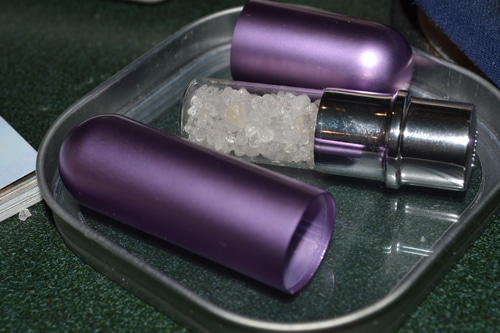
In herbal health, we want to manage the symptoms of colds and flu for comfort but still allow the immune system to do its job. That means adding moisture where there is dryness and using food or fasting, teas, and herbal preparations to ease symptoms, like nasal congestion, while still allowing the body’s own immune system to speed healing.
For me personally, the most distressing part of a cold or virus is having nasal congestion and not being able to breathe. OTC decongestants shrink swollen sinus passages but also speed heart rate and raise blood pressure. Instead, you can use an herbal inhaler that opens nasal passages, relieving nasal congestion, while at the same time relaxing the body’s response.
I made some salt inhalers to help my winter malaise, using a mixture of therapeutic Dead Sea salt and essential oils. I got the idea for these inhalers from Unit 8 of my Intermediate Herbal Course with the Herbal Academy of New England. Unit 8 talked about the respiratory system and offered herbal remedies for the different stages of a cold. It also briefly discussed the use of essential oils in treating colds and viruses.
“Among aroma therapists, inhalation is popular way to harness the healing properties of EOs. After the molecules are inhaled into the bronchi they create an increased bronchial secretion, which can benefit many respiratory ailments. The properties of the essential oils are absorbed quickly into the circulatory system.” (The Herbal Academy, unit 8, “Aromatherapy for the respiratory system”)
You can use the recipe effectively in 3 ways
Packed firmly into an inhaler and carried in your purse, sort of like old-fashioned smelling salts.
As a steam inhalation.
In a footbath.
In a bath.
Print
DIY Herbal Salt Inhaler for Nasal Congestion
- Prep Time: 5 min.
- Total Time: 5 minutes
- Yield: 1/4 cup 1x
Description
Make this DIY nasal inhaler in just 5 minutes or less and take advantage of the therapeutic benefits of Dead Sea Salt and natural, organic, essential oils.
Ingredients
1/4 cup of Dead Sea salt, coarse
25 drops eucalyptus essential oil
25 drops lavender essential oil
15 drops tea tree essential oil
5 drops rosemary essential oil
3 drops cajuput essential oil
3 drops marjoram essential oil
Instructions
Mix Dead Sea salt and essential oils thoroughly in a bowl. Place ½ tsp of the mixture into glass chamber of inhaler. Jiggle the salt gently and add more salt until no more salt can be added. Place the cap on the glass inhaler and insert the glass chamber into the protective steel base. Cap the inhaler tightly and label “for sinus congestion”.
Notes
Don’t use a plastic inhaler for this project as the wide hole in the top of the plastic inhaler allows salt to escape.
DIY Herbal salt inhaler for nasal congestion
You can make this in 5 minutes or less.
Yield: 1/4 cup
(not for oral use)
You’ll need a 4 part metal and glass purse size inhaler (preferred). You won’t need the cotton wick that comes with the inhaler for this project. Don’t use disposable plastic inhalers as the hole is too big and it will allow the salt to escape.
Please use organic essential oils. Nonorganic essential oils, in many cases, contain pesticides and other chemicals that are concentrated with the plant material when the essential oils are distilled. When your body is sick or has a toxin load you don’t want to give it the added burden of chemicals hidden in your natural remedies.
Ingredients:
1/4 cup of Dead Sea salt, coarse
25 drops eucalyptus essential oil
25 drops lavender essential oil
15 drops tea tree essential oil
5 drops rosemary essential oil
3 drops cajuput essential oil
3 drops marjoram essential oil
Directions:
Mix Dead Sea salt and essential oils thoroughly in a bowl. Place ½ tsp of the mixture into the glass chamber of the inhaler. Jiggle the salt gently and add more salt until no more salt can be added. Place the cap on the glass inhaler and insert the glass chamber into the protective steel base. Cap the inhaler tightly and label “for sinus congestion”.
Place remaining salt mixture in a cloth bag, inside a tightly sealed container. Keeping it in a cloth bag keeps it from clumping and adhering to the side of a jar or tin, allowing you to use the full measure of the ingredients. It saves waste.
The salt mixture can be used in several ways. See below.
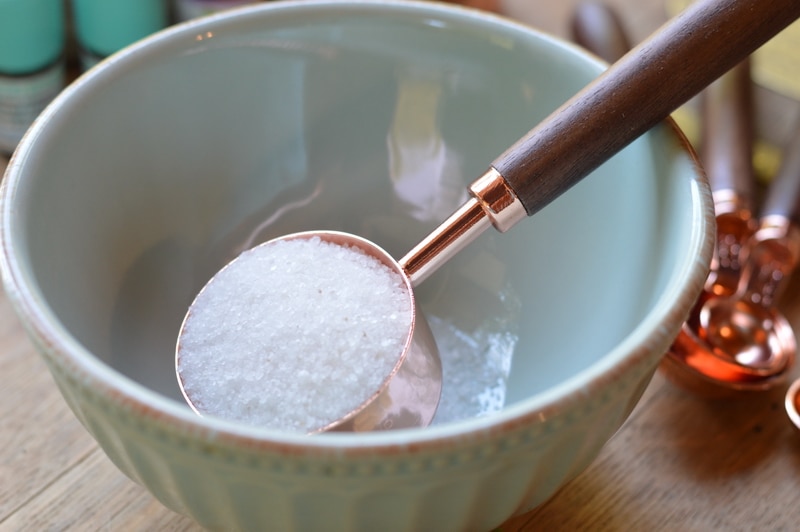
Why I picked these ingredients:
Dead Sea Salt –Dead Sea Salt is famous for its therapeutic, mineral-rich quality. It is antiseptic and rich in magnesium and other trace minerals. It was found that people who worked in mineral-rich salt mines didn’t get colds and asthma the way other people did. The salt is antiseptic and encourages freer breathing, reducing swollen sinuses.
Eucalyptus (Eucalyptus sp.) – Eucalyptus is very useful for colds and chest congestion. It is expectorant, antiseptic, antiviral, anti-inflammatory. It is useful for bronchitis, sniffles, sinus congestion, and hoarse scratchy throat. *See below for specific contraindications for the use of Eucalyptus in children.
Lavender (Lavandula angustifolia) – Lavender is antiseptic, antiviral, antibacterial, calming, antispasmodic. It reduces headaches and is especially useful for tension headaches and sinus headaches. It reduces nasal congestion.
Tea Tree (Melaleuca alternifolia) – Tea Tree oil is antiseptic, antiviral, antimicrobial, antifungal, anti-inflammatory, anti-parasitic. It is decongestant, reducing nasal congestion and chest congestion, and stimulates the immune system to heal the body.
Marjoram (Origanum majorana) – Marjoram is sweet-smelling. It is antiseptic, anti-viral, anti-inflammatory, calming, relaxing. It calms coughing and bronchial spasms through its anti-spasmodic action. It clears mucous from the lungs and relieves pain.
Cajeput (Melaleuca cajuputii)– Cajeput is from the same family as Tea Tree and has many of the same qualities and benefits. It has a sweeter smell. It is antispasmodic, antiseptic, warming, antiviral, anti-inflammatory, and decongestant. It soothes sore throat and relieves nasal congestion.
Rosemary (Rosmarinus officinalis) – Rosemary helps clear the mind and restores clear thinking. It is antiseptic, clearing, anti-catarrhal, opens bronchial passages, relieves cold symptoms. It reduces sniffles and relieves sinus congestion. It also aids digestion and supports the liver in detoxification.
*Contraindications: Eucalyptus dives should not be used with children under 10 years of age due to the presence of the ketone, piperitone chemotype. Eucalyptus globulous should not be used with very young children. Eucalyptus radiate and Eucalyptus polybractea have no contraindications and can be used with caution with children.
Some Rosemary essential oils contain ketones and should not be used by children under 10 or by pregnant women.
How to use:
Inhaler:
Uncap the inhaler and place the end close to your nostril and breathe deeply. Then repeat with the other nostril. The essential oils will open your airways, shrinking inflammation, calm nerves, and stimulate the immune system to fight the virus. May be used as often as needed.
Steam inhalations:
Add remaining salt to a cloth bag. To make a steam inhalation add 1 tbsp to 4 cups of hot water (ensure that water is steaming but not too hot). Place face over the bowl of hot water and breathe deeply. Be careful not to burn your face. Breathe for 10 minutes at a time to clear sinuses and relieve chest congestion.
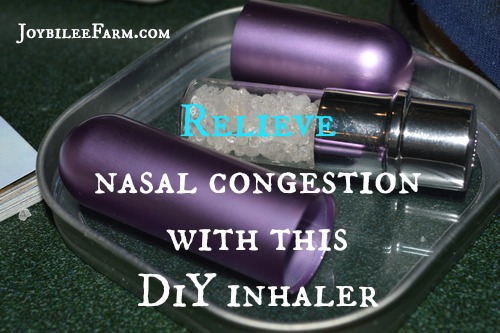
Foot soak:
Add ¼ cup of salt mixture to a foot bath of hot water. Soak feet for 15 minutes. You will absorb the mineral-rich formula through your skin, relieving achy muscles and fever, and clearing sinuses and relieving nasal congestion and tightness in your chest.
Bath:
Add ½ cup of the Dead Sea salt mixture to a tub of water, plus 1 cup of baking soda. Soak for 20 minutes in the tub of hot water. The herbs and the moisture will draw out toxins from your body and help you breathe more easily, relieving nasal congestion.
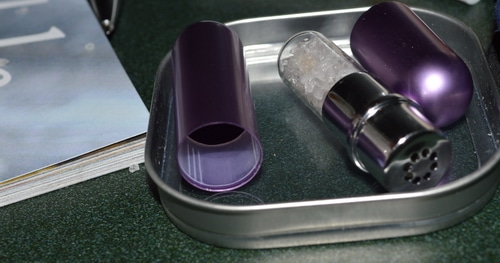
More healing goodness from the Dead Sea
Concerned about Essential Oil Safety? More information here.
References:
Kathi Keville. Aromatherapy, Healing for body and soul. (Publications International: Lincolnville, Ill.) 1998.
Kurt Schnaubelt. Advanced Aromatherapy, the science of Essential Oil Therapy. (Healing Arts Press: Rochester, Vermont) 1995.
Valerie Ann Worwood. The Complete Book of Essential Oils and Aromatherapy. (New World Library: San Rafael, CA) 1991.
Some folks are asking for the link to purchase the glass and metal inhaler — here it is:


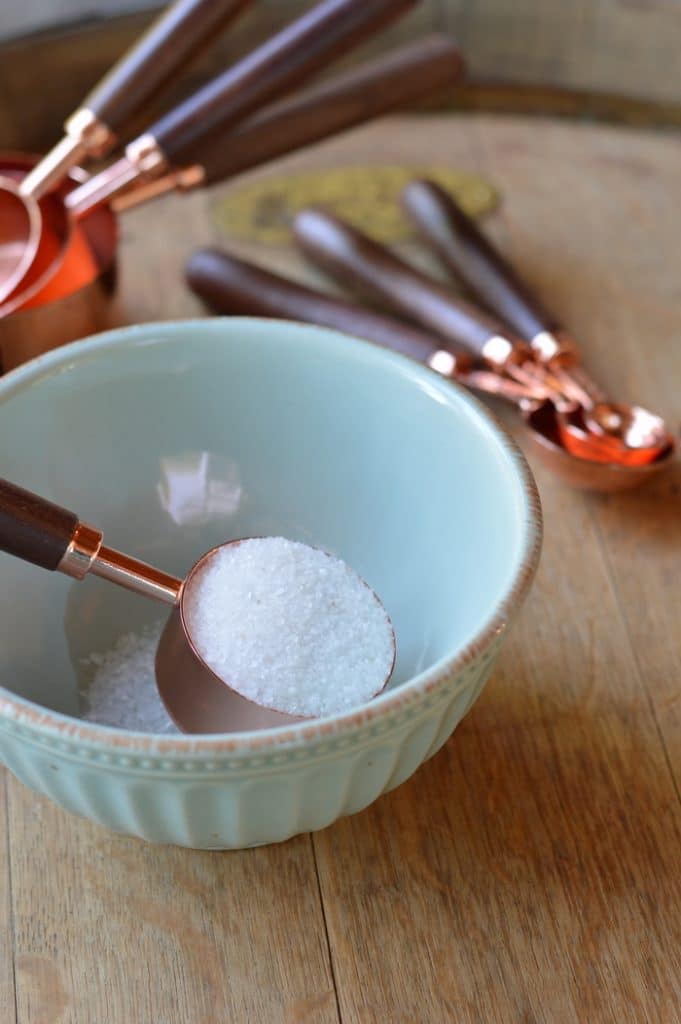

Chris,
Sadly I cannot find any more inhalers like we need and in the link you gave they no longer are selling them.
Seems sadly we are losing all our good companies and ugh…
Have you heard of anywhere we can get like those glass and metal ones?
I will keep on looking also.
You are the only person I have found o be trustworthy so far and I have been delving deep and looking far.
Keep up the good work. ~ <3
Oh I was going to ask…I see a lot of sugars in peoples scrubs and in basically everything they are using SUGAR and like for scrubs and masks can we use something different for the abrasiveness? My body gets the shakes and I sweat bad when I get any sugars in me-even through the skin. The only good thing is I have been losing weight but now I cannot lose any more so I need to figure out what I can allow in my body as I take very little sugar but medium carbs and ugh yes processed sadlythough I am less and less on those.
will the salt pass through the holes?
Rosemary and Eucalyptus have constituents that have been known to cause breathing difficulties in young children. Sniffle Stopper blend from Plant Therapy is recommended for children under 10. It contains: Fir Needle, Rosalina, Spruce, Cypress, Spearmint, and Cedarwood Virginian, which are all kid safe essential oils.